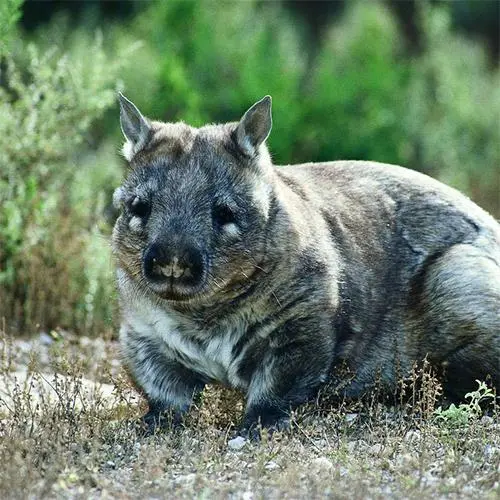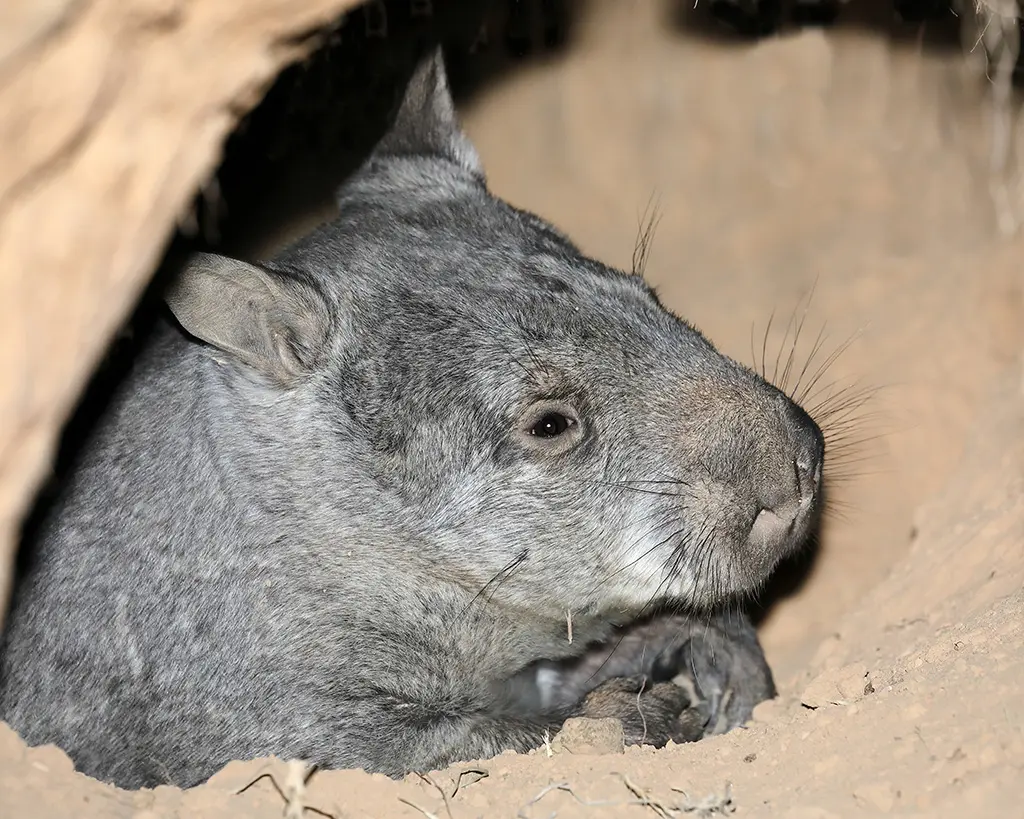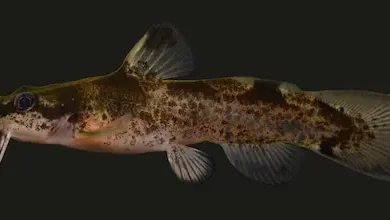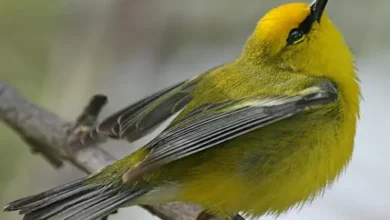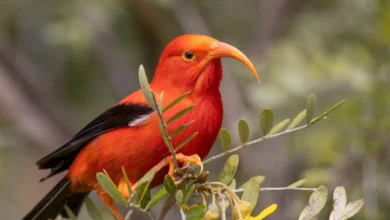The Northern Hairy-Nosed Wombat: A Critically Endangered Australian Icon
Introduction
The Northern Hairy-Nosed Wombat (Lasiorhinus krefftii), also known as the Yaminon, is one of the rarest mammals in the world. With fewer than 300 individuals remaining in the wild, this species is classified as Critically Endangered by the International Union for Conservation of Nature (IUCN) (Horsup et al., 2022). The Northern Hairy-Nosed Wombat is the largest of the three wombat species and plays a crucial role in its ecosystem through its burrowing activities.
This article provides a comprehensive overview of the species, covering its taxonomy, evolutionary history, physical characteristics, habitat, behavior, reproduction, threats, and conservation efforts.
1. Taxonomy and Scientific Classification
The Northern Hairy-Nosed Wombat belongs to the Vombatidae family, which includes all wombat species. Its scientific classification is as follows:
| Kingdom | Animalia |
| Phylum | Chordata |
| Class | Mammalia |
| Order | Diprotodontia |
| Family | Vombatidae |
| Genus | Lasiorhinus |
| Species | L. krefftii |
The species was first described by Gerard Krefft in 1872, hence the scientific name Lasiorhinus krefftii (Johnson, 2006).
2. Evolutionary History and Heritage
Wombats are marsupials, meaning they carry their young in a pouch. They are part of the Vombatiformes suborder, which also includes koalas. Fossil records suggest that wombats diverged from other marsupials around 40 million years ago during the Eocene epoch (Louys et al., 2009).
The Northern Hairy-Nosed Wombat is believed to have split from its closest relative, the Southern Hairy-Nosed Wombat (Lasiorhinus latifrons), approximately 2-3 million years ago (Tate, 1941). Historically, the species had a much wider distribution across Queensland, New South Wales, and Victoria, but habitat destruction and competition with livestock drastically reduced its range.
3. Physical Characteristics
The Northern Hairy-Nosed Wombat is the largest of all wombat species, with adults weighing between 30–40 kg and measuring up to 1 meter in length (Horsup, 2004). Key physical features include:
-
Fur: Soft, silky, and grey-brown in color.
-
Nose: Covered in fine hair (distinguishing it from the Bare-Nosed Wombat).
-
Ears: Pointed and longer than those of other wombats.
-
Claws: Strong and adapted for digging extensive burrow systems.
-
Pouch: Faces backward to prevent soil from entering while digging.
4. Habitat and Distribution
Historical Range
The species once inhabited semi-arid grasslands and eucalypt woodlands across eastern Australia, including parts of New South Wales and Victoria (Johnson, 2006).
Current Range
Today, the only remaining wild population is found in Epping Forest National Park (Scientific) in Queensland, with a second, reintroduced population at the Richard Underwood Nature Refuge (Horsup et al., 2022).
Habitat Requirements
-
Sandy soils for burrowing.
-
Native grasses (e.g., Aristida and Chloris species) for food.
-
Low predation pressure (historically impacted by dingoes and now by foxes).
5. Behavior and Ecology
Burrowing
Northern Hairy-Nosed Wombats are solitary and nocturnal, spending most of the day in complex burrow systems that can extend up to 20 meters in length (Banks et al., 2003). These burrows provide protection from predators and extreme temperatures.
Diet
They are strict herbivores, feeding primarily on:
-
Native grasses
-
Roots
-
Sedges
Their low metabolic rate allows them to survive in arid conditions with limited food (Barboza & Hume, 1992).
Reproduction
-
Breeding Season: November–April (rainy season).
-
Gestation: ~21 days.
-
Pouch Life: 8–9 months.
-
Sexual Maturity: ~2–3 years.
Females typically produce one joey every two years, contributing to slow population recovery (Horsup, 2004).
6. Threats to Survival
Historical Threats
-
Habitat loss due to agriculture.
-
Competition with livestock for food.
-
Predation by dingoes and foxes.
Current Threats
-
Low genetic diversity (inbreeding risks).
-
Climate change (drought reduces food availability).
-
Disease (e.g., mange from invasive species).
7. Conservation Efforts
Protected Areas
-
Epping Forest National Park (Scientific) – Established in 1971, this is the primary conservation site.
-
Richard Underwood Nature Refuge – A reintroduction site established in 2009 (Horsup et al., 2022).
Population Management
-
Predator-proof fencing to exclude foxes and dingoes.
-
Supplemental feeding during droughts.
-
Genetic studies to maintain diversity.
Breeding Programs
Captive breeding has been challenging due to the species’ solitary nature, but artificial insemination is being explored (Taggart et al., 2016).
8. Current Population Status
As of 2023, the estimated population is around 300 individuals, up from just 35 in the 1980s (Horsup et al., 2022). While this is a positive trend, the species remains Critically Endangered.
9. Conclusion
The Northern Hairy-Nosed Wombat is a remarkable yet highly vulnerable species. While conservation efforts have stabilized its population, ongoing threats from climate change, habitat degradation, and disease necessitate continued protection. Public awareness, habitat restoration, and scientific research are critical to ensuring this unique marsupial does not vanish forever.
References
-
Banks, S. C., et al. (2003). Demography of a critically endangered wombat. Journal of Zoology.
-
Barboza, P. S., & Hume, I. D. (1992). Digestive strategies of the wombats. Marsupial Biology.
-
Horsup, A. (2004). Recovery plan for the Northern Hairy-Nosed Wombat. Queensland Government.
-
Horsup, A., et al. (2022). IUCN Red List: Lasiorhinus krefftii. IUCN.
-
Johnson, C. N. (2006). Australia’s Mammal Extinctions. Cambridge University Press.
-
Taggart, D. A., et al. (2016). Assisted breeding in wombats. Reproduction, Fertility and Development.

